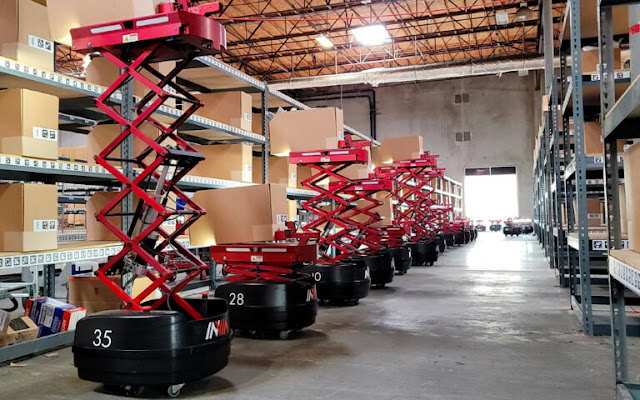Advancements in technology are allowing companies to thrive in today’s competitive environment. Companies are modernizing their IT infrastructure with new server technology that can handle a host of demanding enterprise applications and scalable cloud-native services. Other critical needs include maximizing space in the data center and efficiently managing energy costs. A select set of new AMD EPYC™ processors are now available to power your cloud-based workloads while driving more performance per watt.
Dell Technologies, in collaboration with AMD, is excited to offer two new types of processors from the AMD EPYC family into our portfolio of PowerEdge Servers. AMD has a long and valued history of providing successive CPU architectures and generations that “drop in” to a physical platform/chassis. This practice continues for the SP5 socket platform with the new AMD EPYC 97×4 CPUs and AMD EPYC 9004 series with 3D V-Cache™ technology. Both utilize and support the same DDR5 memory and PCIe Gen5 IO ports as classic AMD EPYC 9004 CPUs, allowing simple and flexible deployment options across the CPU types.
Expanding Support for Cloud-native Use Cases
The newest AMD EPYC™ 97×4 models are built on an exciting “Zen 4c” architecture optimized for workloads that demand the highest possible system-level aggregate throughput with an industry-leading 256 threads per socket, including both cloud native and containerized workloads. Compared to classic 4th Generation AMD EPYC CPUs, the new AMD EPYC 97×4 CPU provides 33% more max cores and threads per socket with a still ample 2MB of L3 cache per core at max core count. For workloads that can utilize 112 or 128 cores per CPU, the new AMD EPYC 97×4 models provide significantly higher overall performance and better performance per watt, while supporting the same “Zen 4c” instruction set architecture (ISA), greatly simplifying software development and deployment.
Memory and RAS Suitable for High Core Count Workloads
Many other high core count CPUs today don’t offer sufficient memory bandwidth to achieve optimal core performance. In contrast, the new AMD EPYC 97×4 CPUs, even at 128 cores, sustain over three Gigabytes per second per core of memory bandwidth and support up to 48 Gigabytes of capacity per core. This is implemented by utilizing 12 channels of industry-standard DDR5 RDIMMs, which is unmatched for other high core count CPUs in the industry. With up to 128 cores as a binary power of two, the AMD EPYC 9754 model is optimal for many software applications and solutions and may reduce the number of licenses required. In addition, AMD EPYC models maintain the same enterprise-class RAS, security and manageability as classic 4th Generation AMD EPYC models. Combined with the security features already built into Dell PowerEdge servers, customers gain an even more robust and secure IT environment.
Efficient Chip Architectures
The new 4th Gen AMD EPYC™ 97×4 chiplet architecture follows prior innovative generations by implementing the CPUs with eight individual “Core + Cache Die” plus one “IO + Memory Die.” This allows the silicon fabrication process for each die type, and thus power and cost to be optimized versus monolithic die approaches used by others.
AMD EPYC 9004 Series with 3D V-Cache Technology
Next, AMD EPYC 9004 series processors utilize AMD 3D V-Cache die stacking technology to triple the amount of L3 SRAM cache per CPU versus classic AMD EPYC processors. Just like 3rd Generation AMD EPYC CPUs for technical computing, 64 MB of L3 SRAM cache is stacked on top of each core/cache die with only a few nanoseconds of additional access latency. Since L3 SRAM cache memory is approximately an order of magnitude higher bandwidth and close to an order of magnitude lower latency versus DDR5 DRAM DIMMs, applications that can keep their “working set” of data within the L3 cache capacity can see a large performance gain.
With a range of 12 to 48 MB of L3 cache per core, PowerEdge servers can run applications such as electronic design automation (EDA), computational fluid dynamics (CFD), finite element analysis and many other technical computing frameworks. More importantly, PowerEdge servers with AMD EPYC processors can achieve significant performance and total cost of ownership (TCO) boosts, especially when considering software licensing costs. As AMD 3D V-Cache ROI proof points proliferate, it is expected that additional applications and tools will optimize their software code and algorithms to take advantage of industry-leading L3 cache capacity per core.
See How PowerEdge Can Deliver for Your Cloud Computing Needs
With the addition of the latest 4th Generation AMD EPYC processors optimized for cloud-native and technical computing use cases, Dell PowerEdge platforms provide optimized computing options across the spectrum of enterprise workloads.
Source: dell.com




















